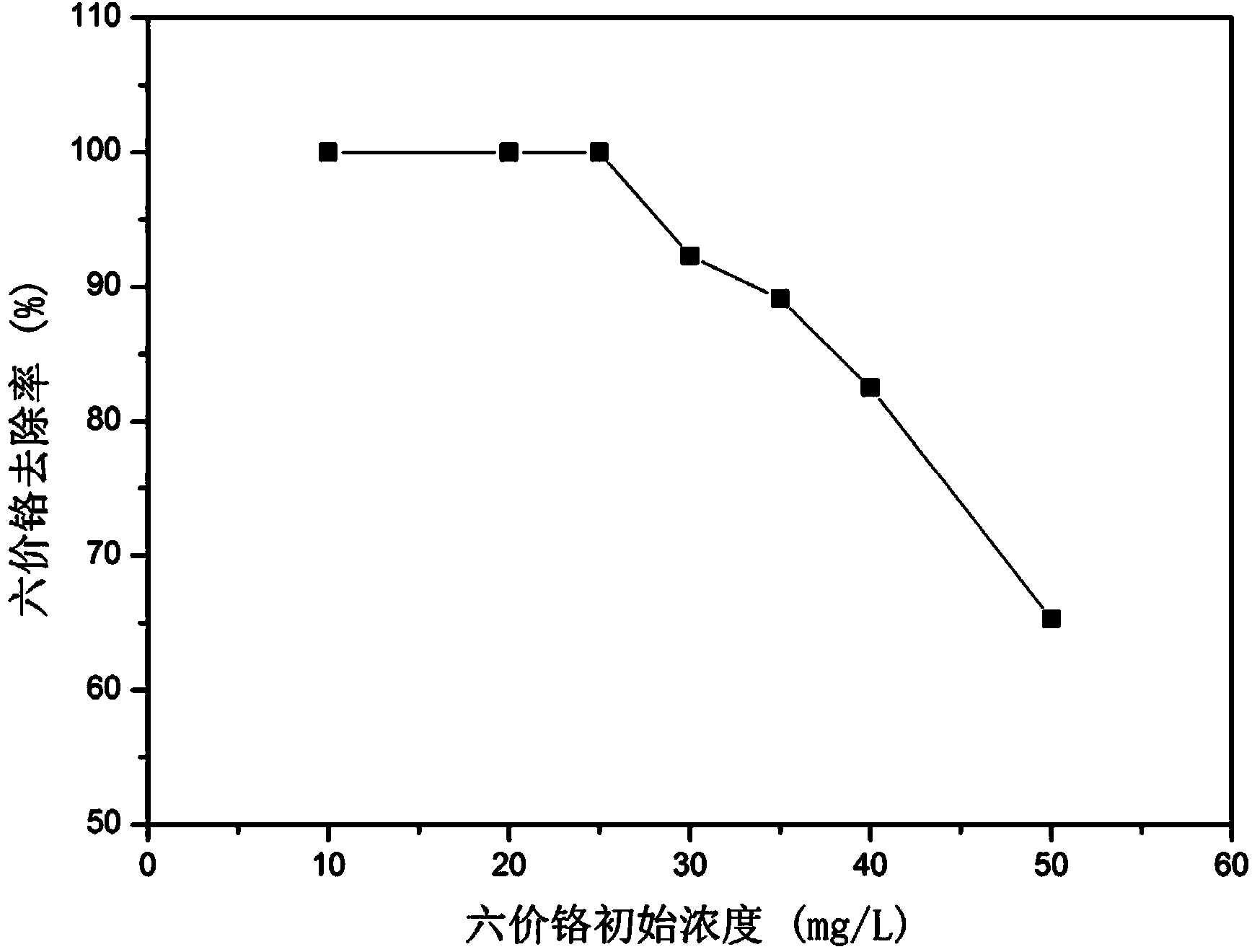Method for removing heavy metal ions out of water
A technology of heavy metal ions and water bodies, applied in the field of environmental pollution control, can solve the problems of large chemical reagent consumption, complicated immobilization steps, and indispensable carriers, etc., and achieve the effects of low cost, easy separation, and strong stability
- Summary
- Abstract
- Description
- Claims
- Application Information
AI Technical Summary
Problems solved by technology
Method used
Image
Examples
Embodiment 1
[0027] The Penicillium simplicissimum used in this example was obtained from the China Center of Industrial Culture Collection (CICC), and the CICC number is 40667.
[0028] The present embodiment removes hexavalent chromium (Cr 6+ ) method, comprising the following steps:
[0029] (1) Liquid culture medium (the components of the aforementioned liquid medium are shown in Table 1), hexavalent chromium (Cr 6+ ) solution, charcoal powder was sterilized at 115°C for 20 minutes, and then cooled to room temperature under sterile conditions. Put the spores of Penicillium simpleum in sterile water to make spore suspension, the concentration of Penicillium simplex spores in the spore suspension is 2.0×10 6 individual / mL. The aforementioned spore suspension is inoculated into a sterilized liquid medium to obtain an inoculated liquid medium.
[0030] (2) Take 7 groups of above inoculated liquid culture medium, set three parallel samples for each group, add hexavalent chromium (Cr 6+...
Embodiment 2
[0037]The Penicillium simplicissimum used in this example was obtained from the China Center of Industrial Culture Collection (CICC), and the CICC number is 40667.
[0038] A method for removing hexavalent chromium (Cr 6+ ) method, comprising the following steps:
[0039] (1) Liquid culture medium (see Table 1 for its composition), hexavalent chromium (Cr 6+ ) solution and charcoal powder were sterilized at 115°C for 20 minutes, and then cooled to room temperature under sterile conditions. Put the spores of Penicillium simpleum in sterile water to make spore suspension, the concentration of Penicillium simplex spores in the spore suspension is 2.0×10 6 individual / mL. The aforementioned spore suspension is inoculated into a sterilized liquid medium to obtain an inoculated liquid medium. Add hexavalent chromium (Cr 6+ ) solution to obtain a mixed solution, so that hexavalent chromium (Cr 6+ ) concentration is 30mg / L.
[0040] (2) Take 5 groups of the above mixed solution,...
Embodiment 3
[0044] The Penicillium simplicissimum used in this example was obtained from the China Center of Industrial Culture Collection (CICC), and the CICC number is 40667.
[0045] A method for removing hexavalent chromium (Cr 6+ ) method, comprising the following steps:
[0046] (1) Liquid culture medium (see Table 1 for its composition), hexavalent chromium (Cr 6+ ) solution and charcoal powder were sterilized at 115°C for 20 minutes, and then cooled to room temperature under sterile conditions. Put the spores of Penicillium simpleum in sterile water to make spore suspension, the concentration of Penicillium simplex spores in the spore suspension is 2.0×10 6 individual / mL. The aforementioned spore suspension is inoculated into a sterilized liquid medium to obtain an inoculated liquid medium.
[0047] (2) Add hexavalent chromium (Cr 6+ ) solution to make hexavalent chromium (Cr 6+ ) concentration is 25mg / L, obtains mixed solution. Add charcoal powder to the aforementioned mix...
PUM
| Property | Measurement | Unit |
|---|---|---|
| concentration | aaaaa | aaaaa |
Abstract
Description
Claims
Application Information
 Login to View More
Login to View More - R&D
- Intellectual Property
- Life Sciences
- Materials
- Tech Scout
- Unparalleled Data Quality
- Higher Quality Content
- 60% Fewer Hallucinations
Browse by: Latest US Patents, China's latest patents, Technical Efficacy Thesaurus, Application Domain, Technology Topic, Popular Technical Reports.
© 2025 PatSnap. All rights reserved.Legal|Privacy policy|Modern Slavery Act Transparency Statement|Sitemap|About US| Contact US: help@patsnap.com



